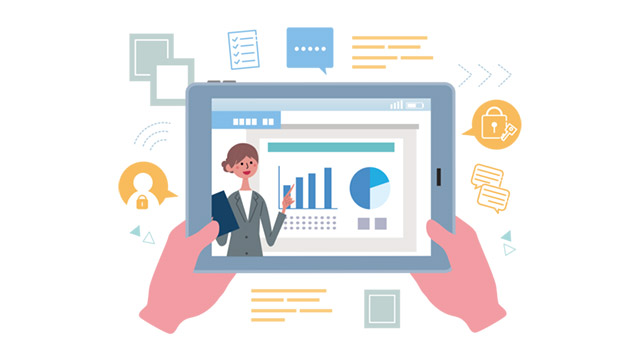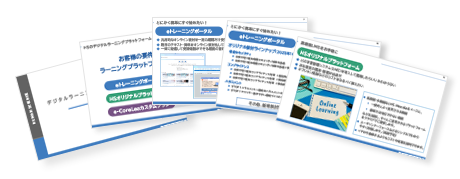2021.06.22
How to Create Microlearning - Methods of Human Science
"Microlearning," which is gaining attention as a new learning style.
Previous, we explained that microlearning materials are resources that allow learners to quickly acquire only the "necessary knowledge," that they offer benefits to both learners and distributors, and that their suitability can vary depending on the learning theme.
So, how should we proceed to actually create microlearning materials?
Human Science has produced over 2,000 e-learning materials since 2000.
This time, our staff will introduce "How to Create Microlearning" based on our accumulated knowledge.

1. Microlearning as Considered by Human Science
The definition of microlearning materials as conceived by Human Science is as follows.
1) Analysis and Design of Learning Content
First, before entering the design phase, we will determine whether the materials are suitable for microlearning.
After that, we will design each teaching material based on a comprehensive understanding of the course and curriculum.
For example, in the case where multiple microlearning materials are delivered under the theme of "Infection Control," we will conduct individual designs based on a thorough understanding of the entire curriculum. This enables planned development and helps eliminate overlaps and gaps in the learning scope of each material.

2) Avoid Overloading Scenarios and Screen Layouts
In each individual material production process, we pay attention to ensure that we do not deviate from the theme, with a total learning time of "up to 5 minutes" as a guideline.
In each process, we always check and adjust to ensure that it is "completed within the time" and "a manageable amount for learning" as we proceed.
2. Key Points of Each Process
From here, I will explain the unique points of microlearning in accordance with the process of material production.
Specification Design (Common Specifications for All Teaching Materials)
Microlearning must be compact throughout the entire process due to time constraints.
Below are the requirements for "common pitfalls in instructional design" and "learner-friendly" materials based on our experience in educational material production.
- ・It's easy to cram in too much information with "this and that." Be decisive and make choices.
- ・Narrow down the theme strictly and do not include unnecessary information. Pay attention to related and supplementary information.
- ・Prepare file formats for environments where videos cannot be viewed (e.g., PDF files summarizing the content of the video)
- ・Consideration for the learning environment requires mobile compatibility
- ・The section to measure learning effectiveness is mandatory. Create a confirmation test.
Development of Learning Themes
Clarifying the theme of the teaching materials means clarifying the learning objectives.
Learning objectives define the desired outcomes after completing the learning process, expressed as "being able to do ○○."
When the learning objectives are clear, it becomes easier to select and filter the information to be included in the teaching materials.
For example, let's consider a curriculum themed around "Infectious Disease Control." In this scenario, several microlearning materials have been created to learn about "Infectious Disease Control."

We will create a teaching material on "Handwashing" as part of the "Infection Prevention Measures" from this set of teaching materials.
The learning objectives are as follows.
- Understand and be able to explain the importance and effectiveness of handwashing as a measure to prevent infectious diseases.
- ・Learn to practice handwashing correctly
Design
Design is carried out thoroughly as it affects all processes.
To achieve the learning objectives, we will consider what kind of materials should be used and specifically list the topics to be explained within the materials.
At this time, we will think in terms of playback time. First, we will set the playback time frame and, within that frame, we will decide as specifically as possible on the selection of information to include and what to explain and to what extent.
Let's also confirm and decide on the delivery method.
Production
During the production process, we create scenarios and storyboards while paying attention to the amount of information, ensuring that we do not exceed the expected playback time set during the design phase.
The key to creating storyboards is to be aware of the distinction between the text and illustrations on the screen and the information conveyed through narration.
What is particularly important to keep in mind is that the total length of the narration does not equal the playback time of the educational material. It is also important to allow time for learners to digest and understand the content.
Additionally, it is necessary to consider periods without narration. For example, there may be instances where video materials are reused or scenes are created where text on the screen is read.
Once the storyboard is complete, we will proceed with narration recording, illustration creation, and authoring.
If interactivity is not required, we recommend using a video format (such as mp4 files) because it can be played on various devices, including computers and smartphones. (Note: Materials that progress through learner interactions are referred to as "interactive materials.")
However, for tests, it is necessary to use tools like iSpring or Articulate Storyline, or to create them in html5 format.
During the production process, there is often a desire to add more information or create something elaborate. However, it is important to proceed without deviating from the initial design.
Spending more time on production than planned or changing specifications later directly leads to increased costs.
Once the materials are completed, you can start learning by registering and storing them in the system or server.
That concludes the explanation of microlearning and tips for production.
The format of the final product and the tools used for development can vary depending on the subject matter and the functions or expressions you want to achieve with the teaching materials.
When actually producing, we hope you will discuss thoroughly with the production staff and consider better options.
Author:
Shizuko Sase
Education Solutions Department Production Group Writer
After joining Human Science, worked as a technical writer,
gaining experience in the design and writing of product manuals and business manuals.
Subsequently engaged in writing and production direction of e-learning materials.
Involved in the production of approximately 200 educational materials so far.
Contact Information:
Phone Number: 03-5321-3111
hsweb_inquiry@science.co.jp












